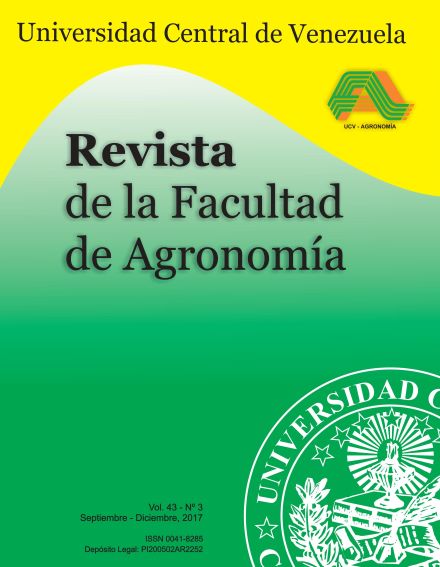Escarificación de semilla de moringa y su relación con las variables de crecimiento de la plántula
Palabras clave:
Moringa oleifera, germinación, crecimiento inicial, germination, initial growthResumen
Este estudio evaluó el efecto de la escarificación de semillas de moringa (Moringa oleifera Lam) sobre el porcentaje de germinación (% G), valor de germinación (VG), altura de planta (AP), incremento de la altura (IA) y velocidad de crecimiento en función de la altura (VCA), a los 5, 7, 9, 12 y 14 días después de la siembra (DDS). Se evaluaron los pesos en base seca de la parte área (PA), las raíces (PR) y el total de la planta (P), estimados de ganancia de peso diario (IPD) y proporción PA/PR. Los tratamientos fueron: escarificación completa (EC), escarificación distal (ED), escarificación proximal (EP), escarificación lateral (EL), sin escarificar (SE). Se empleó un diseño completamente aleatorizado, con cuatro repeticiones, con la siembra de 50 semillas/repetición/tratamiento. De acuerdo con los resultados obtenidos, la aplicación de los tratamiento pregerminativo Escarificación Distal, Escarificación Proximal y Escarificación Lateral a semillas de M. Oleifera, a los 14 DDS, no presentaron diferencias significativas con el testigo en cuanto al porcentaje de Germinación, altura de la planta, peso en base seca de la parte área, peso en base seca de las raíces y peso en base seca del total de la planta. El porcentaje de germinación y el peso en base seca del total de la planta fueron mayores en el testigo, en relación al tratamiento con escarificación completa.
Moringa seed scarification and seedling growth development relationship
ABSTRACT
To evaluate the effect of scarification of seeds of Moringa (Moringa oleifera) on the percentage of germination (% G), germination value (VG), plant height (AP), increased height (IA) and the relationship of planting growth rate and height (VCA) at 5, 7, 9, 12 and 14 days after sowing (DDS), an study was conducted. The dry weights of the aerial paert (PA), roots (PR) and total plant (P), estimated daily weight gain (IPD) and ratio PA/PR, were evaluated. The treatments were: complete scarification (EC), distal scarification (ED), proximal scarification (EP), lateral scarification (EL), no scarification (SE). A completely randomized design was used with four replications and 50 seeds were sed/repetition/treatment. According to the results, the application of Distal, Proximal and lateral Scarification to M oleifera seeds at 4 DDS did not show significant differences with the control in relation to: Percentage of germination, height of the plant, weight on dry basis f the aerea part, roots and total plant. The percentage of germination and dry weight of the total plant were higher in the contro in relation to the treatment with complete scarification.


